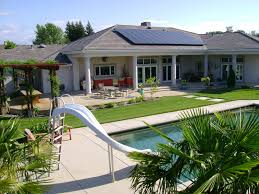
The Panel Debate : Mono Vs PolyCrystalline Solar Panels – Which one is better ?
Mono Crystalline vs Poly-Crystalline Solar Panels
Occasionally when we tell people about the 250W solar panels that we use and recommend at networkGreen, we sometimes have the comment “Oh I don’t want multi crystalline solar panels because they are not as efficient as mono crystalline solar panels.” So is this true or is this an issue to even take into account? Let’s look at this and see what the truth is.
Mono Crystalline Manufacturing
Mono crystalline solar panels have cells that are cut from a chunk of silicon that has been grown from a single crystal. Growing these single crystals is costly; therefore mono-crystalline panels can be more expensive than other types of solar panels.
Poly / Multi Crystalline Manufacturing
Multi-crystalline or poly-crystalline solar panels have cells that are grown from multifaceted crystalline material – a crystal that has grown in multiple directions. Multi crystalline solar cells have slightly lower cell efficiency than their mono cousins due to the multifaceted crystal the cells are grown from; however this is not a major factor as the multi crystalline crystal is cut in a square rather than the rounder shape of the mono crystalline cell. This square shape means more of the solar panel area can actually be used to produce solar power as the available solar panel area is used more efficiently.
Mono Crystalline and Multi Crystalline Solar Panels Cell Efficiencies
Notice that the 250W solar panel as used by networkGreen ; it’s module efficiency is 15.1%. This is the percentage of power that falls on each solar cell that is converted into useable solar power. The top picture of the mono crystalline solar panel used by networkGreen has a module efficiency rate of 15.9%, which is an efficiency rate only marginally higher than that of the solar panels by many manufacturers, but notice all the extra white space on the mono crystalline solar panel?
This wasted space on the mono crystalline solar panel due to the shape of the single crystals will actually make the multi crystalline solar panel more efficient as the space on the solar panel is used in a more efficient manner! So the disadvantage of a slightly lower cell efficiency is offset by the more efficient use of space on the solar panel – so per m2 of solar panel installed the multi crystalline in this case would be more efficient!
Mono Crystalline and Multi Crystalline Solar Panels & Temperature
Another thing to keep in mind when choosing between mono crystalline and poly / multi crystalline solar panels is the temperature co-efficient of the solar panel. The temperature co-efficient can be found on a solar panels data sheet and it is usually broken down into three readings; Voc, Isc and Pmax / Pmpp. The only reading you really need be concerned about is the Pmax Pmpp, as this is the actual amount of power in Watts that will be lost for every degree above 25o C that your solar panels are operating at. For example the REC 250W multi crystalline solar panel has a Pmax rating of -0.40%/oC. A quality mono crystalline solar panel such as the Adani 300 W also used can have a Pmax rating of -0.48 %/oC, though only a difference of 0.08% per oC this small amount adds up on hot summer days and makes the poly / multi crystalline out perform the mono crystalline solar panel in real world, conditions.
Reputable Solar Panel Manufacturers & Installers
One of the most important things when choosing a solar panel is to make sure that you choose a reputable installer and manufacturer. A very useful resource is to actually see how the panels have performed in the real world under independent testing. Do also check our blog post on the engineering of the solar plants to know why it is important for the design to be done really well. After all, the solar plants that are being set up are for 25 years of life for solar panels or more.
In Conclusion..
- Mono crystalline solar cells are slightly more efficient than poly / multi crystalline solar cells.
- Poly / multi crystalline solar panels are slightly cheaper to manufacture than mono crystalline solar panels.
- Due to tighter spacing of the cells on Multi / poly crystalline solar panels compared to mono crystalline solar panels the higher efficiency of mono crystalline solar panels is negligible.
- Multi / poly crystalline solar panels tend to perform slightly better at high temperatures than mono crystalline solar panels
- A major factor to take into account when choosing solar panels is the reputation of the manufacturer. Will they be around in the future to honor their products warranty? Would you need to send faulty components overseas in the event of a warranty claim?
